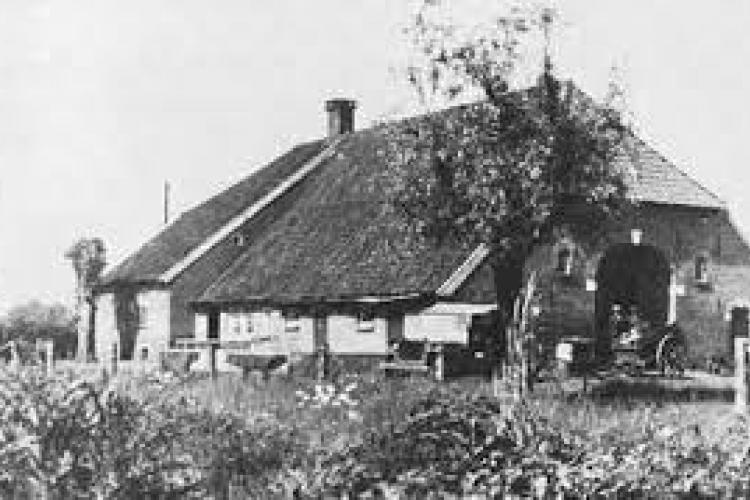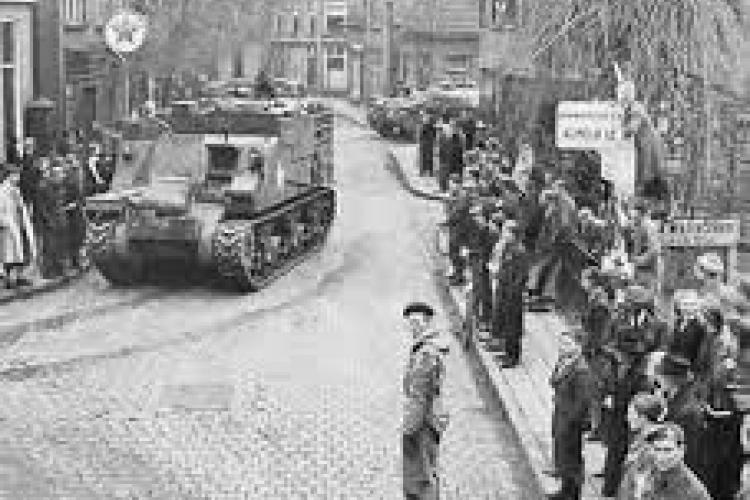Divisional Unit
SERVICE NO: A / 115824
DATE OF BIRTH: September 28, 1919 – Staffa – County of Perth - Ontario
DATE OF DEATH: April 6, 1945 25 years 6 months
PARENTS: Mr. William and Olive Fawcett – Staffa – Ontario
BROTHERS: Mr. William Fawcett – Toronto – Ontario.
Mr. John Fawcett – Staffa – Ontario.
SISTERS: Mrs. Virna McNichol – Walton – Ontario
Miss Leona Fawcett – London – Ontario.
Miss Olive and Margaret Fawcett – Staffa - Ontario
CEMETERY: Originally buried in a trench beside a railway embankment
in the vicinity of Weine between Delden and Wiene – Netherlands
CEMETERY: Holten Canadian War Cemetery – Holten –
Overijssel – Netherlands.
IX G 13
Height: 5’ 5” Weight: 148 pounds
Complexion: clear Eyes: blue Hair: brown
Occupation: Farming Religion: Church of England
RESIDENCE: Staffa - Ontario
ENLISTMENT: September 17, 1942 – London – Ontario under the Natural Resouce
Mobilization Act for Home Defence.
ENLISTMENT AGE: 22 years 11 months
ENLISTMENT: June 14, 1944 – Terrace – British Columbia into Canadian Active
Service Force.
ENLISTMENT AGE: 24 years 8 months
- September 17, 1942 – enlisted into the National Resource Mobilization Act for Home Defence in London and Private Fawcett was attached to No. 1 District Depot in London – Ontario.
- October 12, 1942 – to No. 14 Brigade Group Royal Canadian Army Service Corp in Terrace – British Columbia.
- October 24, 1942 – to Headquarters Royal Canadian Army Service Corps 8th Canadian Division in Prince George – British Columbia.
- March 17, 1943 – granted furlough to April 7, 1943.
- April 17, 1943 – granted special agricultural furlough to June 15, 1943.
- October 15, 1943 – to No. 11 District Depot in Vancouver – British Columbia.
- October 17, 1943 – to Mountain Warfare School – Terrace – British Columbia.
- December 16, 1943 – granted leave until January 9, 1944.
- June 14, 1944 – to No. 10 District Depot in Vancouver – British Columbia for General Service.
- July 1, 1944 – Private Fawcett is detailed for duty.
- August 11, 1944 – to No. 16 Canadian Infantry Training Centre in Calgary – Alberta.
- October 18, 1944 – granted embarkation leave until October 31, 1944.
- November 30, 1944 – embarked from Canada bound for overseas.
- December 9, 1944 – Arrived in the United Kingdom.
- Just prior to Christmas of 1944, Private Fawcett completed a Infantry Training Course at No. 2 Canadian Infantry Training Regiment “B” Company. He completed this training on January 11, 1945.
- January 20, 1945 – Embarked from England.
- January 23, 1945 – Arrived in North-West Europe.
In the field…..
- January 29, 1945 – attached to Lincoln and Welland Regiment
The Service File of Private Fawcett indicate he was with the Regiment until his death on April 6, 1945. He would have been involved in Operation Veritable, the Hochwald, Veen and the Twente Canal. However, my research indicated the Lincoln and Welland Regiment received new conscripts during the last week of March. The new men had to go through a training program to bring them along.
The morale in the Regiment was low. Too many casualties. They were under manned and still advancing.
It is quite possible that Private Fawcett joined the Regiment in late March at a town called Best in the Netherlands.
The fighting now in what everyone knew were the last stages of the war was different. The German Army defending across from them was made up of a small core of highly-trained soldiers but with the majority being old men and young teenagers. This made the opposition unpredictable and desperate. The Canadians seemed to be able to feel this, and they did not want any mistakes this late in the war.
- On the 28th of March, the Regiment learned about OPERATION HAYMAKER, the final thrust into the Netherlands and then into Germany itself.
- On March 30, the Regiment moved by convoy from Best and up through Nijmegen, Cleve and across the Rhine River unopposed via the Black Friar’s Bridge at Rees.
- On April1, 1945, somewhere between Rees and Emmerich, the Regiment was informed of the full retreat by the Germans. They expected no opposition until they reached the Twente Canal, so the Regiment moved rapidly through Ruurop on April 2nd with an advanced planned on April 4th to take the Canal.
- On April 3rd, the Regiment was in place on the south side of the Twente Canal by noon, when orders came for them to advance immediately. Fierce resistance was being met at the Canal to the west, but if the Regiment acted now they could cross without enemy resistance.
Two Companies advanced over the Canal with little resistance being met as an artillery barrage had come down on the enemy positions and lessened their will a bit plus they had supporting machine gun fire. Both Companies were onto their objectives within an hour. A third Company came up to reinforce their positions.
“D” Company to the east was not having an easy advance as once they were over the Canal and dug in around some farmhouses, they had to deal with a heavy German counter-attack from the North. By late evening “D” Company was in a bad way, surrounded all around by the enemy. They were now inside a farm house and attached barn. They called for the artillery to brought down on their position and the barrage eliminated the enemy outside the buildings while the structures protected the men of “D” Company.
In the early hours of April 4th, reinforcements were ordered to “C” Company to help consolidate their position and by dawn the fight was over.
The Regiment now moved to the town of Delden, liberated it, and it was here they would be for the next three days. The enemy opposition was much less each day.
The Regiment was about 3 miles west out of Delden at a place called Wiene on the Twente Canal.
- It was April 6, 1945 and on this day the weather was a fair and warm. In the early morning hours at approximately 3: 30 am, “D” Company became aware of the sounds of the Germans moving across the Twente Canal and the Regiment prepared for an enemy counter-attack that never happened.
At 10:40 am, “B” Company went to assist the 29th Armoured Reconnaissance Regiment (South Alberta) where a build up of enemy troops had been reported.
All day patrols had been sent out to do mopping up but there had been very little enemy contact.
In the evening, at 7:32 pm, “D” Company was heavily mortared. The enemy mortars were located and eliminated by the Lincoln and Welland Mortar Unit. It was during this evening event where our research indicated Private Fawcett lost his life in battle.
- The Post Master of Staffa had been named Executor of the estate of Private Fawcett.
- Colonel C. L. Laurin the Director of Records per the Adjutent General wrote a letter dated
- On April 21, 1945, a letter was written to the family expressing the condolences by the Minister of Defence and Army Board on the death of Private Fawcett who died serving his country in the North-West Europe theatre of the war. It was sent by A. E. Walford the Major – General per the Adjutant General.
- July 21, 1945 informing the family where Private Fawcett had been originally buried and that he would be reburied in a military cemetery.
- A letter dated June 20, 1946 arrived for the family stating that Private Fawcett had been reburied in Holten Canadian War Cemetery with full honour and Christian rites. The letter stated that this place was a military cemetery and that the grave of their son would be cared for in perpetuity. As well there was an invitation for the family to send a personal message so it could be engraved on the headstone of Private Fawcett. This had been sent by Colonel C. L. Laurin the Director of Records per the Adjutant General.
- The family received a letter dated November 21, 1947 from a V. H. Soegies of Almelo in the Netherlands informing the family that they had adopted the grave of Private Fawcett and would tend to it. They went on to say they wished to correspond with the family.
While Clifford was stationed in Terrace – British Columbia for mountain warfare training he purchased a $100.00 Dominion Bond.
The Last Pay owed to Clifford amounted to $175.38. His War Service Gratuity amounted to $181.80.
His personal belongings included a fountain pen, a new testament, soldiers handbook, pocket prayer book, a photo wallet, a pair of scissors and souvenir coins.
The Soldiers Book of Private Fawcett states he was born in Dublin - Ontario.



